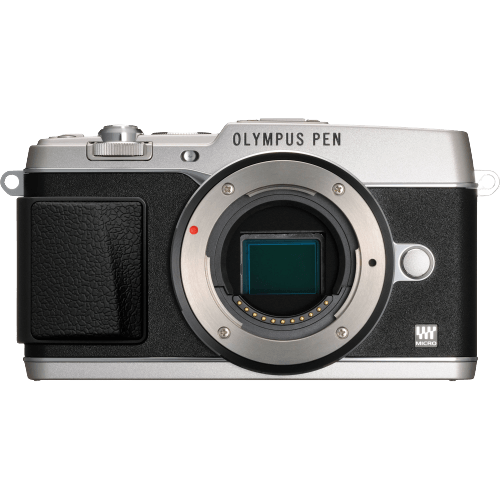Olympus PEN E-P5 Specs and Scores

The Olympus PEN E-P5 scores a 53 out of 100, which reflects its general specifications. Announced on May 10, 2013, and released in the same year, this mirrorless camera was launched with a price tag of $1000. Its dimensions are 122 x 69 x 37mm, and it weighs 420g (0.93lbs).
In today’s market, the E-P5’s specifications are somewhat dated, but still respectable for casual photography enthusiasts. Its compact size makes it easy to carry, and the weight is manageable for extended use.
Olympus PEN E-P5 Overview and Optics
The Olympus PEN E-P5 receives a score of 55/100 for optics. With 16.1 megapixels and a shooting speed of 9 frames per second, the camera provides reasonable performance in this area. Its CMOS sensor and TruePic VI processor contribute to a DXOMARK score of 72 for the sensor. The camera features a Micro Four Thirds sensor size and a compatible Micro 4/3 lens mount.
In the current market, the E-P5’s specifications are modest. Cameras with larger sensors and higher megapixel counts have become more common. Despite this, the E-P5 has image stabilization and a 4:3 aspect ratio, which can still appeal to some users.
Considering the optics, the Olympus PEN E-P5 is a decent choice for photographers seeking a compact camera with a smaller sensor and image stabilization. However, it may not be the best option for those looking for cutting-edge performance and the highest image quality.
Olympus PEN E-P5 Video Performance
The Olympus PEN E-P5 receives a video score of 57 out of 100. This camera offers Full HD video resolution, with maximum dimensions of 1920 x 1080, and a frame rate of 30fps. Additionally, it comes with built-in time-lapse functionality, which enhances its video capabilities.
Comparing the E-P5 to other cameras on the market, its video features are not exceptional. Many modern cameras now boast 4K resolution and higher frame rates, allowing for smoother and more detailed footage. However, the E-P5 still provides decent quality videos for casual users and those not requiring professional-level video performance.
The Olympus PEN E-P5 is a solid choice for photographers who prioritize still image quality and are not heavily focused on video capabilities. While it may not excel in the video department, it remains a reliable camera for general use.
Olympus PEN E-P5 Features and Benefits
The Olympus PEN E-P5 receives a feature score of 57/100. It boasts a 3-inch touchscreen with a resolution of 1,036,800 dots, allowing for easy navigation and clear image previews. However, it lacks a flip screen, which is a highly sought-after feature for many photographers. The absence of GPS is another drawback, but the camera compensates with built-in WIFI, simplifying image sharing and remote control capabilities.
Despite these features, the Olympus PEN E-P5 faces tough competition in today’s market. The lack of Bluetooth connectivity and a flip screen are notable limitations. Comparatively, modern cameras offer a wider range of features, making the E-P5 less appealing to potential buyers. The E-P5’s specifications may not be the most advanced, but they remain functional for those seeking a reliable, easy-to-use camera.
Olympus PEN E-P5 Storage and Battery
The Olympus PEN E-P5 receives a storage and battery score of 21/100. It has one memory card slot, accepting SD, SDHC, and SDXC cards. The battery life offers 330 shots, which is relatively low compared to other cameras in today’s market. The battery type is BLN-2, and the camera lacks USB charging capabilities.
When comparing storage and battery performance, the Olympus PEN E-P5 falls short in today’s competitive camera market. With limited memory card slots and a short battery life, users may find it inconvenient for extended photography sessions. The absence of USB charging further limits the camera’s practicality in various situations.
